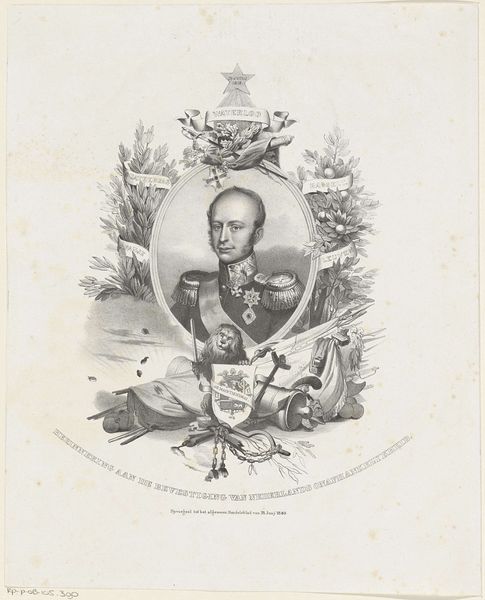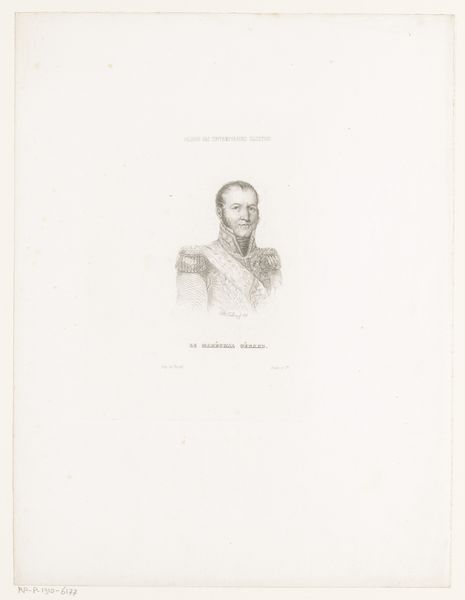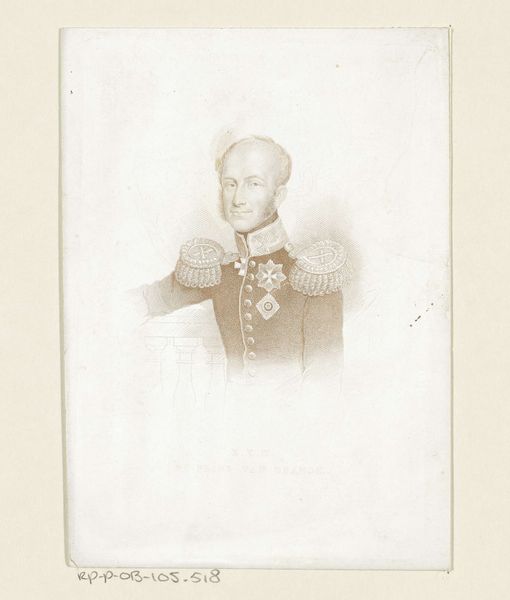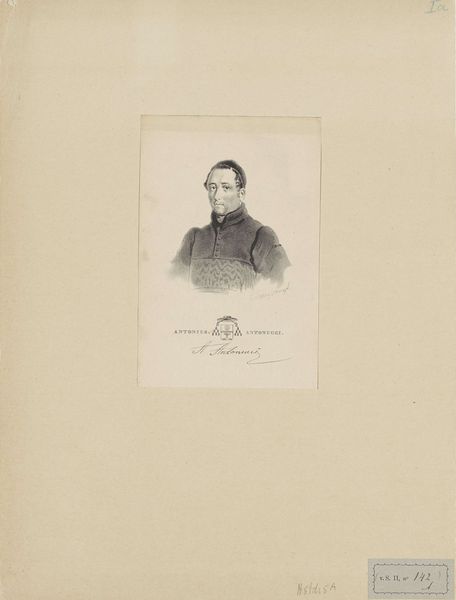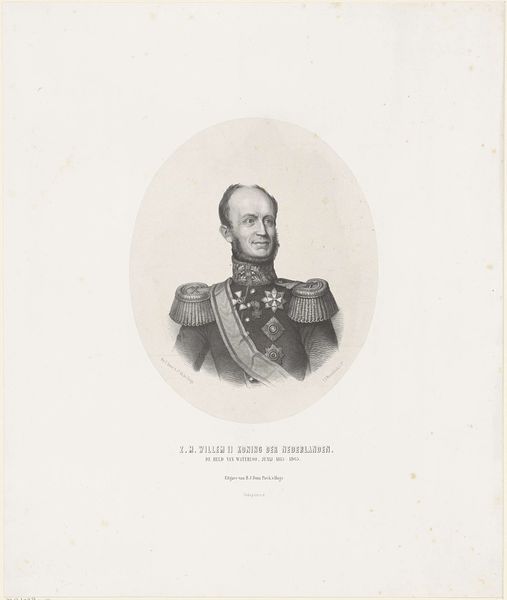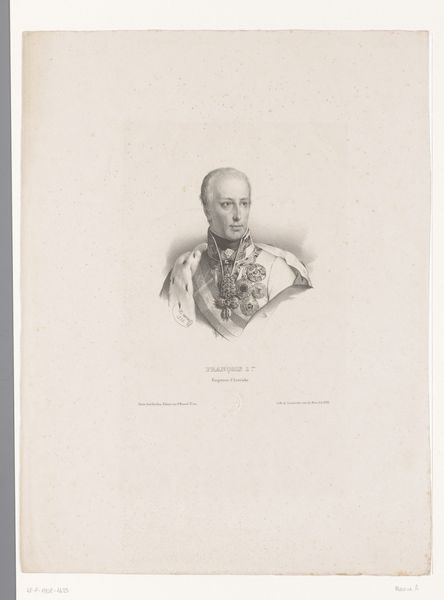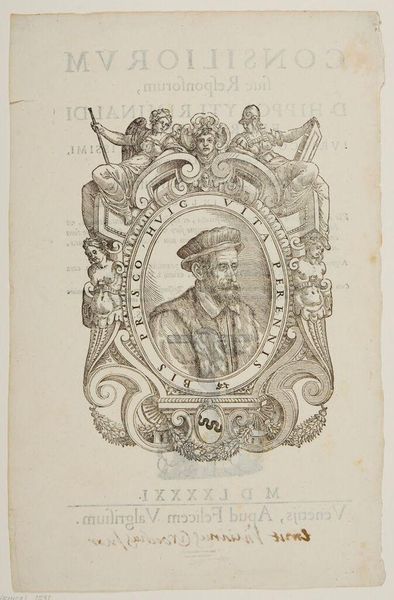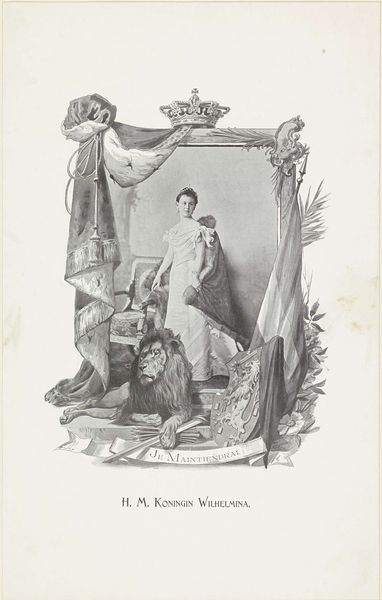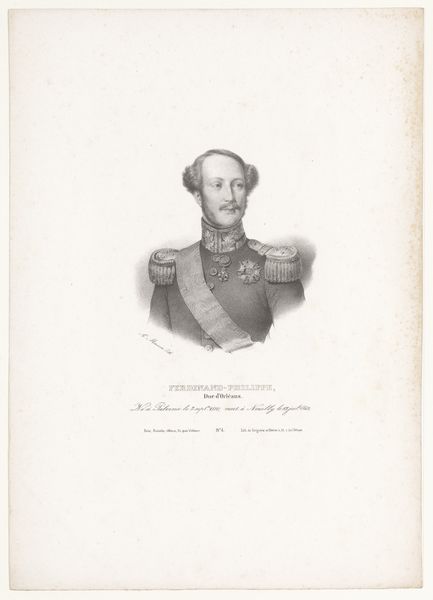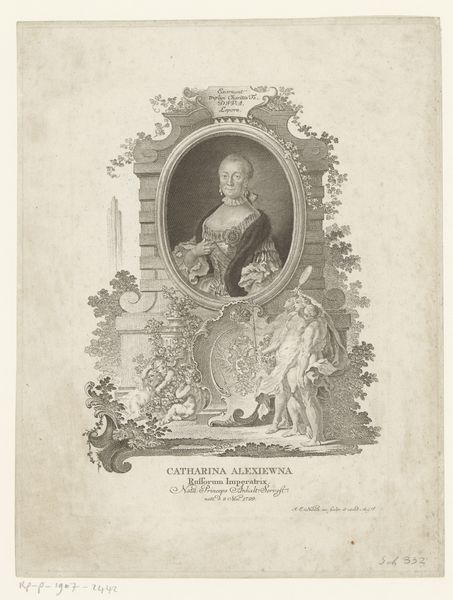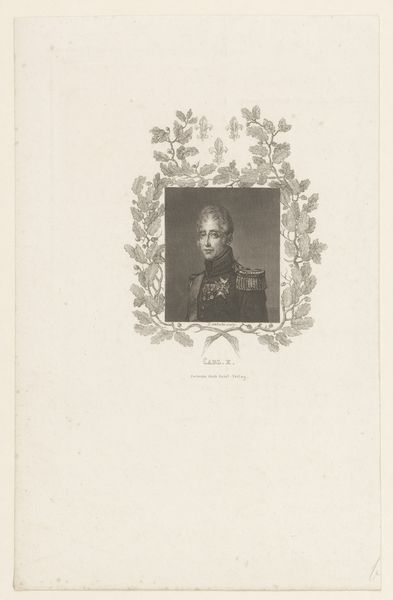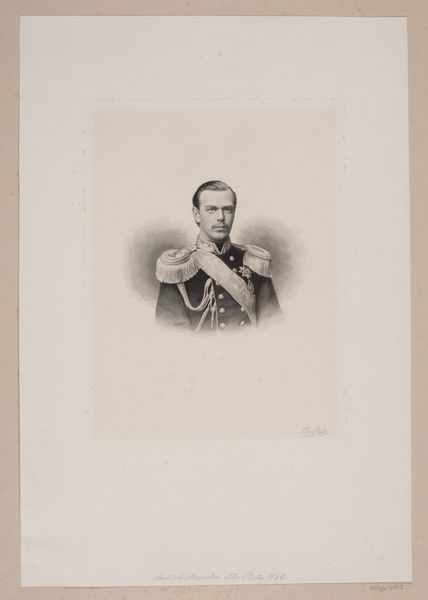
Dimensions: height 291 mm, width 196 mm
Copyright: Rijks Museum: Open Domain
Curator: Before us, we have Johann Wilhelm Kaiser's engraving of Willem II, King of the Netherlands, likely created between 1849 and 1894, now held in the Rijksmuseum collection. It strikes me as a fairly standard, if formally adorned, royal portrait. Editor: The severity in his gaze, juxtaposed with the almost excessive ornamentation of his uniform and the bordering scrollwork, gives a feeling of…constrained power, perhaps? What statement do you think this piece is attempting to make? Curator: Focusing on its formal elements, the stark contrasts achieved through the engraving process highlight the subject’s strong jawline and commanding presence. The ornate frame—featuring, rather strangely, names like Calabria and Waterloo—acts as both a decorative element and a symbolic enclosure. There's a dialogue created between control and liberation in terms of semiotics and aesthetic expression. Editor: Perhaps those locations signify military victories or territories of strategic interest under his reign. It’s vital to consider that Willem II faced significant political tensions, caught between conservative and liberal factions during a period of national identity formation. This portrait attempts to solidify his image. The detailed military regalia serve not only as markers of status but, as historical record suggests, distract from other narratives surrounding his role in colonial policies. Curator: Interesting take! The artist uses line and shadow masterfully, but one could also view the frame—quite apart from political history or monarchal agendas—as a device intended solely to isolate the king within a symbolic and visually distinct realm. To remove the artwork from social content means one engages purely with the visual language and structure of art. Editor: Still, can we genuinely disassociate visual culture from political context? The strategic construction of a ruler’s persona during times of turbulence—via dress, ornamentation, symbolic objects—all form complex cultural symbols embedded in and perpetuating particular worldviews. And this royal symbol is most likely printed and spread for that intent, isn't it? Curator: That perspective definitely gives greater food for thought about representation, particularly surrounding how we decode it. Thanks! Editor: Agreed. These visual records offer multiple entry points for interpretation when approached with rigorous contextual interrogation.
Comments
No comments
Be the first to comment and join the conversation on the ultimate creative platform.
